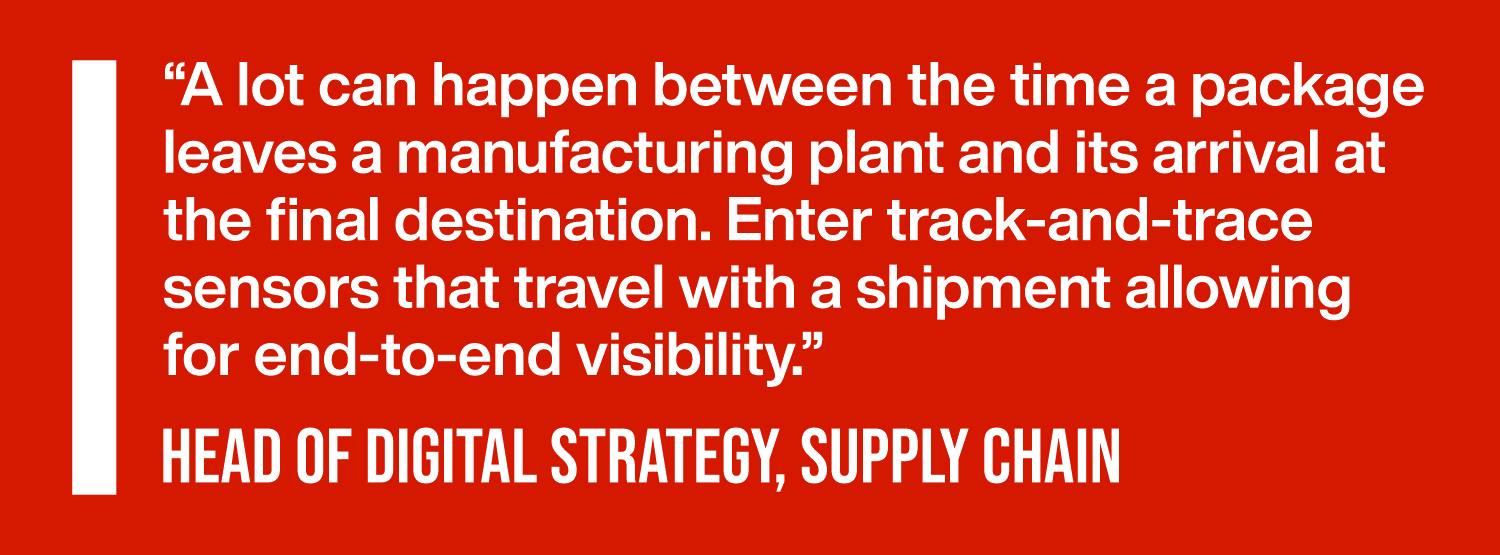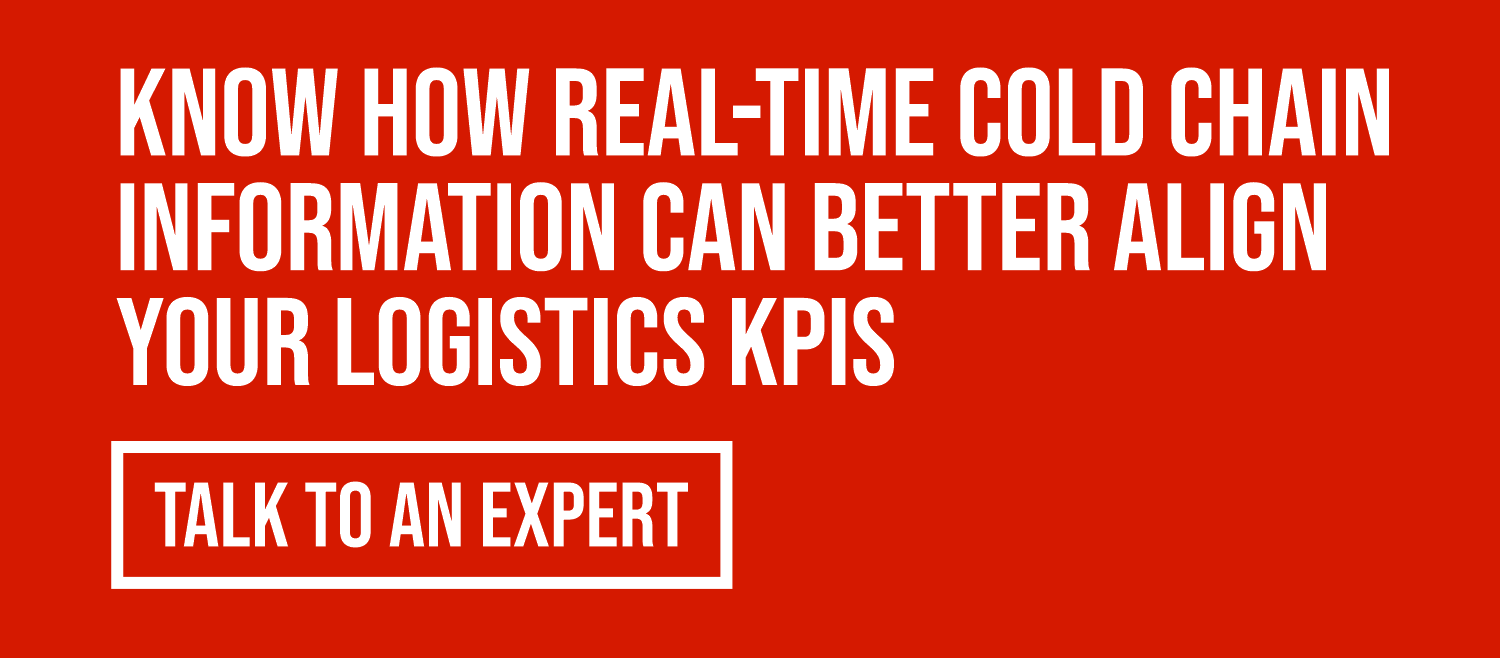Let's explore the logistics case study of one of the world’s largest pharma companies, the story of how this US-headquartered, globally present pharma giant improved teamwork in their logistics and is now confidently shipping COVID-19 vaccines using cold chain logistics visibility.
Cold chain logistics visibility is not just about cost savings and efficiency; it can transform organizations and bring about positive behavioral change across the organization just like it did for one of the world’s largest pharma companies.
Let us discuss how one of the forerunners in the COVID-19 vaccine distribution race chose a dependable end-to-end cold chain visibility solution that not only transformed its cold chain logistics operations, but also helped it confidently distribute the COVID-19 vaccines.

The Challenge
To ensure patient safety, the pharma giant verified condition of stock at various points in the supply chain. However, lack of real-time supply and condition data led to overstocking to maximize inventory availability of saleable stock. They relied on their freight forwarders and carriers to learn about the Estimated Time of Arrival (ETA), which was often inaccurate, or the update was not actionable. They relied on data loggers for “on-arrival” condition verification.
In due course, they realized that their inventory challenge was induced by a larger problem: lack of alignment of department-specific goals with company goals.
Lack of Alignment of KPIs with Company Vision
Even before the pandemic, the company realized that although their two main departments — transportation and logistics — were delivering well on their respective objectives, they were not working in sync, which costed the company big.
For example, the transportation team would focus on cost reduction, while the logistics team wanted on-time in-full (OTIF) delivery. Many of their multimodal shipments which were going from Europe to the US or North America were moved by different modes — air or ocean, with a significant first and last mile segment on road. Since the transport team prioritized optimizing cost, this parameter solely drove decisions on the freight forwarders and carriers used.
Multiple divisions supplying to consolidated warehouses meant there was no single visibility thread. Owing to this, the pharma company constantly endured fluctuating inventory or was overstocking more than it was required to ensure timely availability for its patients.
Both departments were trying to save costs, however, one wanted to achieve it by lowering transportation cost, while the other strived to achieve it by improving efficiency using premium modes of transport to bring predictability. Ultimately, they were both unable to meet their goals — they could neither run a lean and predictable inventory operation, nor save on transportation costs.
Lack of Condition Information until Arrival
Another big problem plaguing the pharma company in their cold chain logistics was — lack of accurate and timely data on shipment condition prior to arrival. There were many instances where the vaccines that were delivered had to be discarded because of spoilage. Although they had condition data, it was not useful because they would only find out about the excursions upon arrival, since they were using passive cold chain data loggers.
Upon arrival, some of the vaccines were found to have exceeded the Mean Kinetic Temperature, because of which they had to be discarded, causing a void in inventory. This led to problems like inventory gaps, overstocking, and locked up working capital, moving the logistics team’s target of lean inventory farther.
![]()
They Tried GPS Trackers, Visibility Platforms, and Data Loggers, but without Success
The pharma company tried three solutions, but none of them could prove to be a comprehensive one to tackle all their issues. The reason was that they did not need a solution that would just address the ‘track and trace’ piece of the problem, but one that could improve overall teamwork in the company, which none of the following could achieve:
1. GPS Trackers
GPS vehicle trackers could not solve the problem because they didn’t work for multimodal shipments. Most of the company’s shipments were multimodal and moving across multiple logistics service providers. GPS vehicle tracking would only cover a small part of a multimodal shipment’s journey.
2. Visibility Platforms
The company also tried visibility platforms that aggregate various visibility data sources. It did not work because some data points were being captured manually, especially at airports and in the first and last mile of the intermodal shipment journey, giving rise to errors or delay in information. Condition monitoring was still a challenge, even if they were to aggregate visibility data from the logistics service providers and carriers.
3. Active Data Loggers
This option did not work because it could not meet the required level of business intelligence needed to make quick decisions. Getting reliable location information across all touchpoints, and more importantly, getting context into the holistic picture of “what, when, and where” was very hard with just a hardware-based temperature monitoring solution.
Active data loggers will give you temperature data, and maybe even location, but will not be able to accurately predict when a shipment would arrive based on the historic patterns and current chain of custody data.

Then Came Roambee’s Visibility Solution, Improving Teamwork
Roambee brought about plenty of changes and improvements to the company with its simple on-demand solution using real-time sensors and no CAPEX involved. Here is what this infrastructure-less, pallet-level monitoring solution made possible:
1. Instantly deployable visibility
The solution involved the use of sensors with zero CAPEX, and the logistics visibility platform merged firsthand sensor data with curated data sources. It provided trusted information on the ETA and condition of the shipments, irrespective of which logistics service provider or mode of transport was used. With this solution, the pharma company was able to achieve single-pane visibility, even for air and ocean shipments.
2. Live condition all the way
The system provided access to accurate real-time data on shipment condition — temperature, humidity, vibration, etc. It also ensured automatic upload of location and condition data collected in flight (when on flight mode) to the cloud upon the arrival of the flight.
3. Accurate ETAs and better actionability
With reliable location and condition data, the regional distribution nodes knew the accurate ETA of inbound stock. Their logistics team could now plan their stock dynamically and there were no instances of surprises or deteriorated vaccines on arrival. Real time visibility on a single platform enabled them to qualify their freight forwarders and lanes for efficiency, and more importantly, predict risk on stock arrivals.
4. Better departmental coordination
They now had a single visibility thread of multiple divisions supplying to consolidated warehouses fostering better collaboration between the logistics and transportation teams. Since both the teams could now see the outcome of their decisions in the light of the company goals in real time, it enabled them to understand the impact that their decisions had on cost optimization at the company level instead of department level.
The digital information provided by the solution helped them bridge the gap to better align KPIs. The pharma company also succeeded in its supply chain digitization because they digitized the entire system, but in parts. The IoT information acted as the glue to make separate business units work as a single team, bringing about organization-level behavioral change.
And… This Was Just in Time for COVID-19 Vaccine Shipments
This company happens to be a large, global COVID-19 vaccine manufacturer. Improved end-to-end logistics visibility brought behavioral change for this pharma giant, which is all set to distribute coronavirus vaccines. Once the system was in place, the company could easily extend the solution to their COVID-19 vaccine shipments.
With Roambee’s solution, the pharma company gained control over their logistics even without relying on the carrier or logistics provider for location and condition data. The rich insights that they got into the routes, lanes, and efficiency of transport providers enabled them to ensure that the COVID-19 vaccines were delivered intact and on time, with high confidence on their efficacy and stability.
The solution is also going to be a savior in their plan to ship vaccines outside of North America into developing parts of the world, which are not accustomed to first world cold chain management yet.
In Summary…
The ultimate objective of the pharma giant is patient safety through top product quality and timely availability of vaccines and medicines.
They can now achieve that without having to overstock by predicting risk of delivery. The IoT-based solution was designed and executed flawlessly to give the pharma giant more leverage to be efficient without affecting patient safety. It gave them the ‘bridge information’ to show how two departments’ KPIs should match by understanding their ETA capability and eliminating human-driven information delays. They cleverly used this information to initiate behavioral change — no more siloed KPIs, but KPIs that drive to overall organizational benefit; department-specific goals became organization-level goals, improving teamwork and orchestration.














